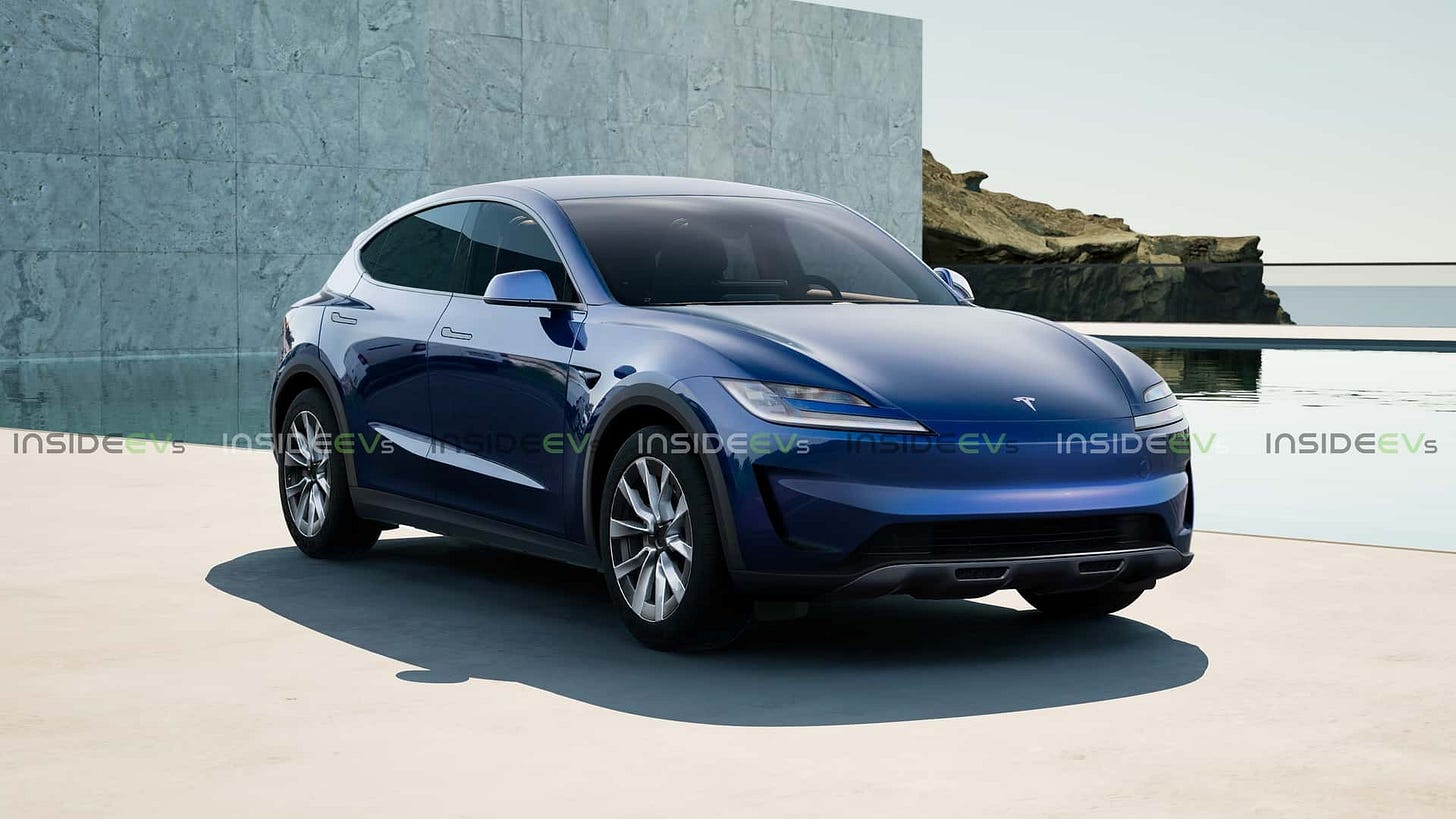Opinion surrounding Tesla has never been so polarized, some claim they are finished while others say their success is guaranteed. To divine the truth we must put politics and emotion aside and peer deep into the company’s operation and performance.
Backstory
Until 2022 Tesla showed consistent growth, after which sales essentially leveled. This coincided with an interest rate increase to combat inflation, which effectively depressed all auto sales. While interest rates have marginally reduced since then, many still believe them too high for a big ticket purchase, considering current economic uncertainty. In other words Tesla has plateaued and the only way to leave a plateau is up or down...
Production Opportunity
Tesla could produce far more vehicles, potentially they could build an additional 60%, but is limited by the number of people who can afford to buy them. However, if Tesla can somehow increase production that would provide economies of scale, allowing them to reduce prices and stimulate sales. Currently they are pursuing two paths to increase production, i.e. more affordable vehicles and Cybercab, which should allow Tesla to ascend to the next level.
Affordable Vehicles

Electric Vehicles (EVs) are less complex than Internal Combustion Engine (ICE) vehicles, so EVs could be cheaper to build because they contain less parts. However, EVs are generally more expensive because they use lithium batteries which are expensive to produce, at least historically. Fortunately the price of these cells reduce by ~30% each year due to more efficient production, and economies of scale from increased demand.
Now Tesla is in a position to produce low cost EVs, through leveraging these underlying economies and their production expertise. These new vehicles will use a new version of their 4680 cells with lithium-iron-phosphate (LFP) chemistry, which can be made at lower cost than outside suppliers. Essentially a large supply of low cost batteries should allow Tesla to produce more economic EVs at scale, which would certainly stimulate sales. The company plan to commence production of these new low cost models in June this year.
Cybercab
Tesla’s Full Self Driving (FSD) software is now so advanced it can operate vehicles without a driver. This should allow them to deploy a fleet of autonomous taxis that can operate across broad areas, i.e. urban and suburban combined. They have begun to test a new vehicle called Cybercab specifically designed for this role.
Tesla has developed a more efficient production technique, called unboxed manufacturing, and Cybercab will use 50% less parts, making it significantly less expensive to produce. Cybercab will also use the less expensive version of 4680 cells to provide economies of scale.
They plan to deploy large fleets (100+) of these vehicles in each city to ensure fast pick-up. In addition, Elon suggests Cybercab fares could become 30-40 cents per mile, undercutting and outperforming public transport. Existing cab companies like Lyft and Uber will evaporate under this kind of competitive pressure. Even autonomous cab services like Waymo can’t compete because they don’t produce their own vehicles, use high cost sensing arrays and restricted to relatively small pre-mapped areas.
“The cost of manufacturing a Cybercab should be nearly $18,000, according to the analyst...ARK estimates that Waymo’s vehicles cost more than $100,000 to produce, its sensor set alone ~$40,000+.” ~ Benzinga
Tesla intend to launch an autonomous service in June this year for Austin Tx, using modified Model 3 and Y vehicles, plus as many Cybercabs as they can muster. Once proven, expect thousands of Cybercabs to appear in San Francisco, Los Angeles, Seattle etc throughout 2026. City-by-city Tesla will create a new business worth $trillions, all around the world.
“With a LOT of work and good ideas, I think it [Tesla] could exceed the value of all transport companies, excluding SpaceX.” ~ Elon Musk/X
Macro Conditions
Recently announced import tariffs should little affect production costs for these new low cost vehicles. Tesla is vertically integrated, which means they manufacture their own car components, and anything they can’t produce they try to source locally. to simplify logistics. No doubt Tesla will produce as many components as possible in the US for these new EVs, to ensure good supply at stable cost.
However, a protracted trade dispute could lead to economic recession but this too could work in Tesla’s benefit. Their new EV’s will be less expensive than most ICE vehicles, so Tesla should gain the lion’s share of the reduced market. Anyone who needs transport, but can’t afford a new vehicle, should gravitate towards using a Cybercab based on cost. Counterintuitively a recession would accelerate Tesla’s long term growth because it would reduce the number of competitors who have less financial reserves.
“For BYD, and other Chinese EV makers like Nio Inc. and Xpeng Inc., extended payment periods [for parts suppliers] can stretch to hundreds of days. BYD took an average 275 days to pay suppliers in 2023, Bloomberg-compiled data show.” ~ Financial Post
Finally Tesla could construct new plants at low cost during a recession, allowing them to better prepare for resurgent markets.
In Conclusion
Tesla is alive and kicking, as they prepare to take it to the next level. New models like their economy vehicles and Cybercab should allow them to push production beyond 3 million p.a.. Common parts will reduce the component cost, bringing the price of EVs within the reach of most people. And when EVs are lower cost than ICE vehicles...whole new world.



